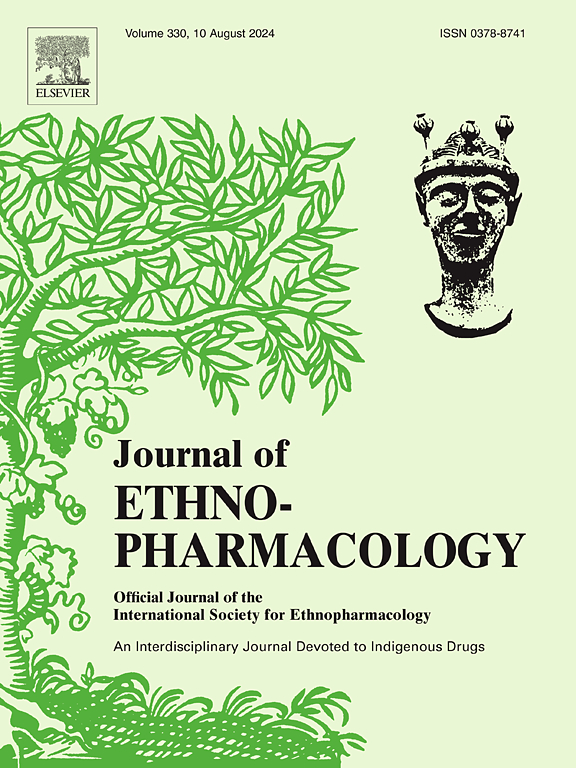Shuanglu tongnao formula alleviates cerebral ischemia/reperfusion injury by rebuilding inflammatory microenvironment after cerebral ischemia
IF 4.8
2区 医学
Q1 CHEMISTRY, MEDICINAL
引用次数: 0
Abstract
Ethnopharmacological significance
Shuanglu tongnao formula (SLTNF) has been clinically proven to have significant efficacy in the treatment of Ischemic stroke (IS), and is a promising formula for IS treatment. Still, the underlying mechanism is not clear. Whether SLTNF ameliorates ischemic brain injury by reversing the pro-inflammatory microenvironment after IS is an interesting field of investigation.
Aim of the study
Based on the result of network pharmacology and single-cell RNA sequencing (scRNA-seq), whether SLTNF mitigates cerebral ischemia/reperfusion (I/R) injury by reversing the pro-inflammatory microenvironment was investigated in vivo for the first time.
Materials and methods
The mice middle cerebral artery occlusion (MCAO) model was established to induce focal cerebral I/R. Subsequently, the remission effects of SLTNF treatment for cerebral I/R injury were evaluated in the MCAO model. scRNA-seq data was used to analyze the immune microenvironment after IS in mice. scRNA-seq and Network pharmacology were applied to predict the mechanism of the treatment of IS by SLTNF. Western blot (WB) and immunofluorescence techniques were employed to validate the potential mechanism.
Results
The experimental results demonstrated that SLTNF dosage-dependently attenuated the infarct volume, neurobehavioral, cell morphology and Nissl bodies damage, and inhibited the apoptosis in cerebral I/R mice. Moreover, scRNA-seq results revealed that the number of NK cells, neutrophils, monocytes, astrocytes and microglia significantly increased after IS. The cell-cell interactions dominated by microglia after IS, the cell-cell interactions between microglia and other immune cells significantly heightened. Furthermore, SLTNF promoted the transition of M1 microglia to M2 type, eventually reversing the pro-inflammatory microenvironment. Combined analysis of scRNA-seq and Network pharmacology results predicted that AGE-RAGE signaling pathway could involve in the regulation of microglia polarization by SLTNF. WB results revealed that SLTNF significantly inhibited the protein expression of CCND1, IL-1β and p-STAT3, which belong to crucial targets of SLTNF and AGE-RAGE signaling pathway.
Conclusion
SLTNF attenuated cerebral I/R injury by reversing the pro-inflammatory microenvironment via the AGE-RAGE signaling pathway in mice.
求助全文
约1分钟内获得全文
求助全文
来源期刊

Journal of ethnopharmacology
医学-全科医学与补充医学
CiteScore
10.30
自引率
5.60%
发文量
967
审稿时长
77 days
期刊介绍:
The Journal of Ethnopharmacology is dedicated to the exchange of information and understandings about people''s use of plants, fungi, animals, microorganisms and minerals and their biological and pharmacological effects based on the principles established through international conventions. Early people confronted with illness and disease, discovered a wealth of useful therapeutic agents in the plant and animal kingdoms. The empirical knowledge of these medicinal substances and their toxic potential was passed on by oral tradition and sometimes recorded in herbals and other texts on materia medica. Many valuable drugs of today (e.g., atropine, ephedrine, tubocurarine, digoxin, reserpine) came into use through the study of indigenous remedies. Chemists continue to use plant-derived drugs (e.g., morphine, taxol, physostigmine, quinidine, emetine) as prototypes in their attempts to develop more effective and less toxic medicinals.
 求助内容:
求助内容: 应助结果提醒方式:
应助结果提醒方式:


